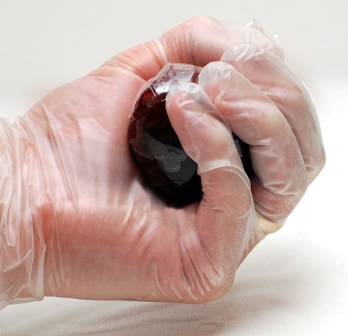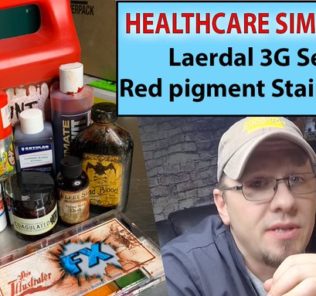Theatrical Blood Effects Part 4 – From MilitaryMoulage.com
Part 4 of MilitaryMoulage.com’s article on Theatrical Blood Effects for Realistic Casualty Simulation has been released! Written by Suzanne Patterson, Curriculum Development Specialist / Instructor at Military Moulage, this is the next installment after part 3 covered covered some important elements to keep in mind for maintaining high realism results when selecting and using theatrical bloods in your casualty simulation event or training exercise. In part 4, Suzanne shares a few extra tips, tricks, and techniques we have employed and that you might find useful for your own active bleeding scenario requirements, including how to “release” effects at the right time using Squibs and pumps.
“Active bleeding is arguably central in creating a believable injury simulation psyche, from drips to flows, and there are a number of ways to rig blood loss from small areas all the way to significant hemorrhaging. For instance, blood trickles or drips from the mouth can be easily achieved from pre-filled gelatin-based blood capsules held in the mouth until bitten to give a slow bloody drip effect. We like to rig a small cut piece of cell-like sponge soaked in edible theatrical blood, and when placed in the mouth next to the lips it mixes with the saliva to make a nice dripping consistency. When ready to drip it out the actor simply inserts the sponge and manipulates it a bit with the teeth. For nosebleeds we also use specially made reticulated sponges prepared with edible blood that, when inserted in the nostrils, will “bleed” automatically upon the actor breathing through the nose. If you need a semi-drying dripped blood look from the ears, mouth corners, or nose that needs to be more stationary, we use blood colored gelatin to which some blood paste or additional glycerin has been added for a slightly wet effect. Our favorite trick is to use a scar making material mixed with some theatrical blood product. This method gives very high realism for film and TV use, and the best part is it’s durable and waterproof in wear.
Squibs and pump assemblies are great to use when you need a more significant amount of blood flow, such as from gunshots, impalement (stabbing), amputations, etc. Blood squibs are small sealed bags of liquid blood that are hidden under clothing, and that can be pyrotechnically rigged to explode, mechanically operated to flow by pneumatic liquid means, or simply break open upon surface impact. Pyrotechnic blood squibs involve electrical charges that trigger a ballistic action to spatter the blood bag, and that can be very dangerous or fatal if not done by a professionally trained and licensed technician. We prefer to use mechanically rigged squibs and pump assemblies because most often on a training exercise these have to be operated directly by the role player portraying the injury. One type of safe squib we make is from a dissolvable plasticized material containing blood powder, and rigged with a fast acting dissolving fluid that creates a gravity blood flow. This works great under clothing for gunshots or impalements. You can make your own blood squib bags to size from many kinds of pneumatic capable or collapsible containments, such as litre bottles, plastic zip close food bags, and even small cut off fingers of disposable gloves. They can be custom rigged to flow or release theatrical blood in a variety of ways and in the manner you need them to flow.”
Sponsored Content:
Read the full 4-part series on MilitaryMoulage.com!
Lance Baily, BA, EMT-B, is the Founder & CEO of HealthySimulation.com, which he started while serving as the Director of the Nevada System of Higher Education’s Clinical Simulation Center of Las Vegas back in 2010. Lance is also the Founder and acting Advisor to the Board of SimGHOSTS.org, the world’s only non-profit organization dedicated to supporting professionals operating healthcare simulation technologies. His co-edited Book: “Comprehensive Healthcare Simulation: Operations, Technology, and Innovative Practice” is cited as a key source for professional certification in the industry. Lance’s background also includes serving as a Simulation Technology Specialist for the LA Community College District, EMS fire fighting, Hollywood movie production, rescue diving, and global travel. He and his wife Abigail Baily, PhD live in Las Vegas, Nevada with their two amazing daughters.
Sponsored Content:


















